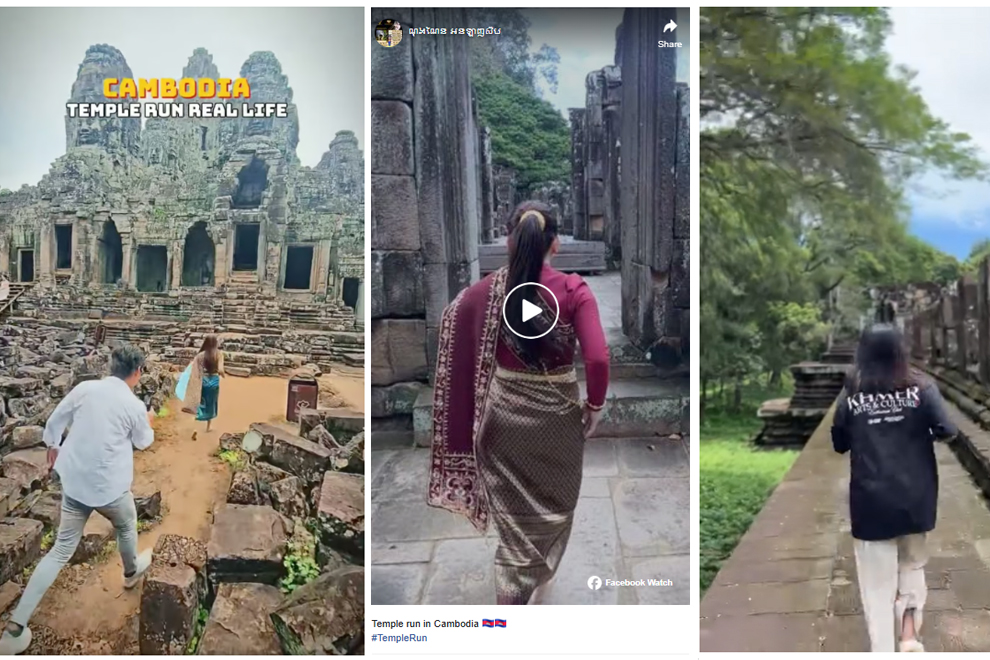A New Trend at Angkor Temples: The Real-Life Temple Run Phenomenon
The recent surge in a trend at Cambodia’s renowned Angkor temples is generating a vibrant dialogue among cultural anthropologists and tourists alike. Visitors to these iconic sites are now embracing a real-life version of the popular mobile game Temple Run, a shift that brings a modern twist to the historical significance of Angkor Wat and Ta Prohm.
Modern Technology Meets Cultural Heritage
Inspired by the thrilling gameplay of Temple Run, where players evade demonic monkeys after pilfering an idol from a temple, tourists are recording and sharing their own adventures through the ancient ruins. This trend effectively merges modern technology with Cambodia’s rich cultural heritage, presenting the temples in a refreshing and appealing manner.
Social Media and the Viral Appeal
Social media platforms, notably TikTok, Facebook, and YouTube, have played a pivotal role in amplifying this phenomenon. Videos showcasing tourists sprinting along narrow stone walkways and leaping across historical passageways, often paired with the recognisable Temple Run soundtrack, have gained considerable traction. This viral content is drawing international attention to the Cambodian tourism sector, creatively spotlighting its ancient treasures.
Government Support and Cultural Concerns
Cambodian Prime Minister Hun Manet has openly supported the trend, perceiving it as a novel method of promoting tourism. “I have seen tourists filming Temple Run videos… Let them do it; it’s okay,” he remarked, appreciating the unsolicited promotion for the country’s historic sites. However, this enthusiasm is met with skepticism from conservationists and cultural scholars.
Preservation vs. Experience: A Delicate Balance
Critics express valid concerns about the potential risks associated with this trend. Cultural conservationists argue that the ancient Angkor ruins, which have stood for nearly a millennium, are delicate and vulnerable. The impulsive drive to capture social media content may inadvertently cause physical damage to these irreplaceable structures and compromise their spiritual significance. Conservationist Simon Warrack echoes this sentiment, questioning why such behavior is deemed acceptable in Cambodia but not in other cultural heritage sites around the world.
A Mixed Perspective on Safe Engagement
Some scholars, like Thuy Chanthuon from the Royal Academy of Cambodia, offer a more nuanced viewpoint. Acknowledging the genuine enthusiasm for the Khmer temples, he also points to safety issues arising from the irregular surfaces of temple stones. Chanthuon emphasizes that while tourists should enjoy themselves, certain areas may be unsuitable for running due to structural delicacy. The Apsara National Authority (ANA), responsible for managing the Angkor Archaeological Park, is striving to strike a balance by promoting tourism while ensuring preservation and visitor safety.
Tourism Growth and Future Considerations
The recent trend has coincided with a notable increase in international tourism to Cambodia. In just the first half of 2024, the country welcomed over 3 million international tourists, marking a 22.7% growth compared to the prior year. Consequently, the local authorities, such as the ANA, urge visitors to adhere to established safety guidelines and respect the cultural integrity of these sites to minimize the impact of the Temple Run phenomenon. Recognizing the duality of promoting tourism while safeguarding historical value is paramount for sustainable preservation in the post-COVID-19 travel landscape.
